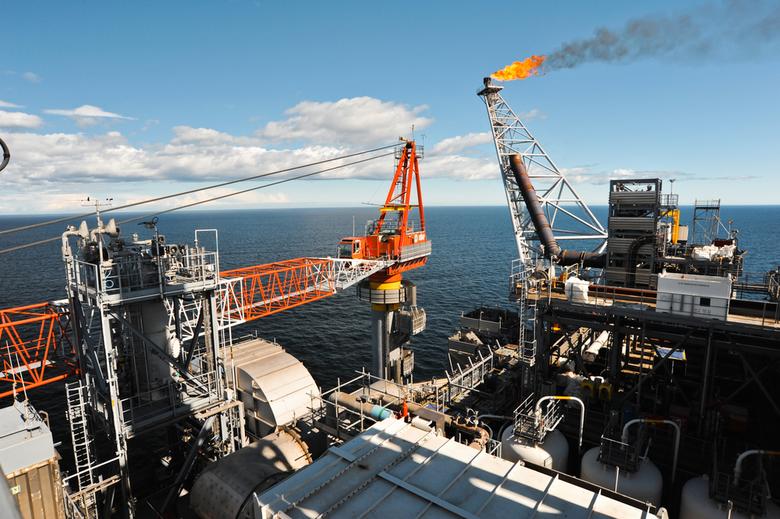
DEMAND OVERTAKES SUPPLY

OGJ - Oil stocks from countries in the Organization for Economic Cooperation and Development rose for the first time in 6 months by a sizable 48 million bbl to reach 3,030 million bbl at the end of January due to near-record US crude stocks and gains in Europe. If the Organization of Petroleum Exporting Countries maintains its output cuts and nothing changes elsewhere, demand should overtake supply in this year's first half, generating an implied market deficit of 500,000 b/d, the International Energy Agency said in its latest monthly Oil Market Report (OMR).
"The market needs time for the full impact of the big supply cuts under the output reduction agreements to be felt," IEA said, warning that the volatility that suddenly broke out last week will probably recur. IEA's message for those looking for a rebalancing of the oil market is that they should be patient, and hold their nerve.
IEA also noted that the recovery path of US tight oil is key to rebalancing the oil market over this year, as is the compliance of the eleven non-OPEC countries that agreed to curb output.
Supply
Global oil supplies rose 260,000 b/d in February as OPEC and non-OPEC producers pumped more. At 96.52 million b/d, world oil production stood 170,000 b/d below year-ago levels. After nearly 2 years of annual output gains, OPEC posted a year-on-year decline for the second month running.
OPEC kept up robust adherence to its promised 1.2 million-b/d supply cut in February, although the group's crude output rose by 170,000 b/d in February to 32 million b/d, with compliance of the group's supply cut easing to 91% from an upwardly revised 105% in January.
Saudi Arabia raised output in February by 180,000 b/d month-on-month to 9.98 million b/d, still below Riyadh's agreed target of 10.06 million b/d. "Saudi Arabia is shouldering the bulk of OPEC's reduction and tanker tracking data suggest that Riyadh is focusing its cutback on North America," IEA said.
Along with Saudi Arabia, Angola and Qatar also have cut by more than required for 2 months running. Kuwait has carried out its cut in full, holding around 2.71 million b/d since January. Output from the UAE was down 60,000 b/d in February after the start of oil field maintenance. Compliance tightened in Iraq, where exports, including from the Kurdistan Regional Government, fell in February. Gabon and Venezuela are the farthest above their production targets.
"Iran and Nigeria—spared from OPEC cuts—raised supply during February. Preliminary data show a substantial [month-over-month] jump in shipments of crude from Iran, which was granted a slight increase under the 2017 OPEC output pact. Relative calm in Nigeria allowed for a 30,000 b/d rise in production," IEA said.
A recovery in Libya, also exempt from cuts, is proving fragile, due to escalating violence.
Beyond OPEC, oil production rose 90,000 b/d in February, as increasing US output offset declines elsewhere.
"The recovery path of US tight oil is key to rebalancing the oil market over 2017, so is the compliance of the 11 non-OPEC countries that agreed to curb output," IEA said.
US production declines bottomed out in September last year, when output stood close to 1 million b/d below a year earlier, but has since recovered markedly. The total US oil rig count rose from a low of 318 in May last year to 617 rigs in early March.
Alongside OPEC reductions, eleven non-OPEC countries, including Russia, Kazakhstan, Mexico, Azerbaijan, Oman and others agreed to a combined 558,000 b/d cut to speed up the drawdown of excess inventories that accumulated over the past 2 years. According to preliminary IEA estimates, they curbed output by 225,000 b/d from October—the agreed reference month—through January, representing an overall compliance level of 40%.
"Russian supply was largely unchanged. Russian officials have repeatedly announced that the 300,000 b/d cut would be gradual and only met by the end of the 6-month period," IEA said.
Demand
IEA left its estimate of global demand growth unchanged from its last report at 1.4 million b/d in 2017.
However, preliminary first-quarter estimates depict global demand at 96.7 million b/d, 1.2 million b/d up on the year earlier but 300,000 b/d lower than the estimate carried in last month's OMR. This sharp slowdown arose as renewed declines took hold in Japan and the UK, alongside surprise year-over-year January contractions in South Korea, India, and Germany.
As the recent currency reform negatively impacted demand, Indian oil demand contracted 130,000 b/d year-on-year in January, a dramatic about-face from the previous 6-month trend when demand rose 235,000 b/d.
-----
Earlier:

